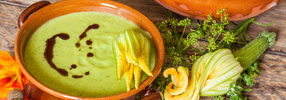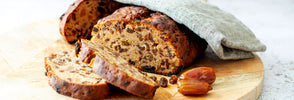
The suspicion of diagnosis - diagnostic procedure for histamine intolerance
The diagnosis of histamine intolerance is often a challenge, since it is characterized by a combination of diverse symptoms that can also occur in other diseases. Unfortunately, most doctors are at a loss and quick to put the patient in the "psychological corner".
We have with Prof. Dr. Storr spoken how the histamine intolerance is best diagnosed. Professor Dr. Martin Storr is a renowned gastroenterologist and internist who works at the Center for Endoscopy in Starnberg. It specializes in the treatment of gastrointestinal diseases, in particular in functional gastrointestinal diseases, bowel diseases and gastrointestinal motility disorders. His research focuses on various aspects of gastroenterology, including research into causes, diagnosis and treatment of gastrointestinal diseases such as irritable bowel syndrome, inflammatory bowel disorders and functional gastrointestinal disorders. Professor Dr. Storr is also known for his work in the field of histamine intolerance, especially with regard to the diagnosis and treatment of this disease. He has published numerous scientific articles and books on this topic and is a recognized expert in this area. You can also find one of his books in our Shop.
Share information about your brand with your Customers. Describe A Product, Make Announcements, Or Welcome Customers to your Store.
💬 Prof. Dr. Storr, how is histamine intolerance diagnosed in medical circles?
“In the case of histamine intolerance, intolerance symptoms of various types are common symptoms. Medically, the carbohydrate malabsorptions such as lactose intolerance, fructose intolerance and sorbint tolerance with breath tests can be easily diagnosed. In the case of intolerance to sugar and carbohydrates Valid treatment guidelines are discussed by the intolerance.
The existence of the clinical picture is often questioned in the case of histamine intolerance. However, the medical guideline clearly names this clinical picture and also names diagnostic steps that are suitable to recognize the clinical picture. Under recommendation 3-16 it says: "In the case of anamnestic triggering or worsening of the symptoms by histamine-containing foods, a temporary histamine-low diet with subsequent targeted re-exposure to check the underlying histamine intolerance". A long -term avoidance of histamine -rich foods is subsequently only recommended for secure intolerance. If allergic symptoms occur, allergological diagnostics at a specialist in allergology are recommended.
In addition, the guideline points out that so far there is no suitable laboratory diagnostics available, which is suitable for exclusion or proof of histamine intolerance. Provisions of enzymes such as the diaminoxidase (DAO) or of histamine values in blood and stool can therefore be omitted. Following the current level of knowledge, the diagnosis can be made by a temporary exhaust diet, followed by a nutritional sample.
This view is for adults, on the other hand, for children, statement 16-2 is that there is only inadequate evidence for histamine intolerance or non-celiac disease sensitivity as a possible differential diagnosis of the child's irritable bowel syndrome. More precisely, published data on histamine intolerance in children and adolescents currently speak against a causality.
Comparable to the gastroenterological guideline on the irritable bowel syndrome of the German Society for Gastroenterology, Digestion and Metabolic Diseases (DGVS), albeit with small differences, is the perspective of German Society for Allergology and Immunology (DGAKI). Instead of the term histamine intolerance, the term histamine intolerance is used here and pointed out that a secure procedure for the diagnosis of an intolerance to orally caught histamine has not yet been described. Following this guideline, too, the determination of the diaminoxidase activity in the blood does not have a diagnostic meaningfulness and can be omitted. This is due, among other things, that further enzymes are available for histamine mining in the body and that DAO determination is not established in this context.
The diagnostically important steps are therefore the anamnesis and specialist diagnosis by an allergist and the leadership of a technically sound nutritional symptom diary, possibly with contained load tables. Laboratory and stool examinations under the objective of the diagnosis of histamine intolerance are not helpful. If the symptoms are not sufficiently improved under nutritional medicine, an extended diagnostic clarification should be carried out.
Conclusion: If you suspect histamine intolerance, keep cool heads, lead a technically well-founded nutritional symptom diary and visit a specialist in allergology or nutritional medicine. ”
💬 Dear Dr. Storr, thank you for these statements.
Share information about your brand with your Customers. Describe A Product, Make Announcements, Or Welcome Customers to your Store.
Here again the steps in the overview - from suspicion to diagnosis
1. Anamnesis and symptoms: An experienced allergist or nutritionist carries out a detailed medical history in order to understand the type and severity of the symptoms, especially after eating histamine -rich foods. Typical symptoms of histamine intolerance are, for example, rash, headache, gastrointestinal complaints, flow snuff, asthma attacks and dizziness.
2. Exclusion of other diseases: Since the symptoms of histamine intolerance can resemble those of other diseases, other diseases such as food allergies, other food intolerance, celiac disease, irritable bowel syndrome and gastrointestinal diseases must be excluded. Here you can contact a gastroenterologist or allergists.
3. Nutrition diary: A nutritional symptom diary can be helpful to recognize the relationship between the absorption of histamine-rich foods and the occurrence of symptoms. This gives you a first impression of whether listening -rich foods are causing your symptoms. You can find a form here on our page.
4. Elimination diet: With an elimination diet you eat strictly histamine for a while. This allows you to check whether your symptoms improve or even disappear from this diet. A little help offers you ours Brochure "From now on Histamine arm". With this you can easily find the entry into a low -histamine diet and, on the other hand, you can test whether histamine intolerance is the trigger of your symptoms.
5. Histamin provocation test: If necessary, a histamine provocation test can be carried out in which patients are given a certain amount of histamine while the symptoms are monitored. Please never carry out this test alone, but always under the monitoring of an experienced doctor.
6. Genetic tests: If necessary, genetic tests can be carried out to identify mutations in the genes that are responsible for histamine mining in the body. With such a test, a genetically related histamine intolerance can also be determined. However, this only rarely occurs.
Share information about your brand with your Customers. Describe A Product, Make Announcements, Or Welcome Customers to your Store.
Advertising
With the Histacure: From now on histamine arm, the step-by-step instructions and 70 practically implementable recipes have already been helped to make a happy life again.
The Histacure consists of a detailed brochure as well as 17 -histamine and gluten -free products. The product range ranges from muesli to baking mixes to various spices, fixed products, dining equipment as well as a histamine -reducing tea and a targeted dietary supplement.
If your diagnosis is secured, then you should go to the cause research. Because histamine intolerance is as individual as its causes. In a next blog post we give you a guideline on how you can find the cause of your histamine intolerance.
Share information about your brand with your Customers. Describe A Product, Make Announcements, Or Welcome Customers to your Store.

From those affected for those affected
We are Thomas and Michaela Zinser, founder of Histaminikus.
Because of the own histamine intolerance of Michaela and our son, we founded Histaminikus. The frustration does not find any suitable histamine food has spurred us to develop low -histamine food.
We would like to give you back a piece of quality of life. Feel free to look around with us.
Kind regards
Thomas and Michaela







